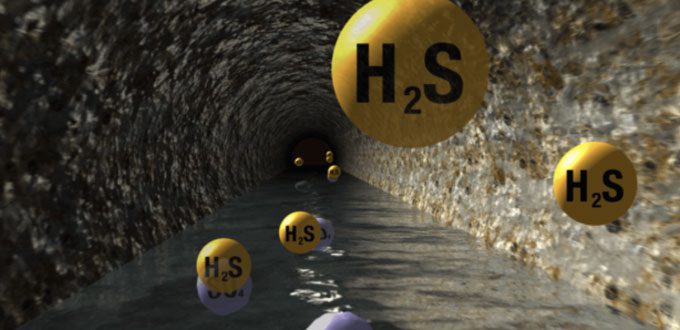Enclosed spaces such as sewers, tunnels, and pits often contain harmful gases like methane and hydrogen sulfide, which can cause poisoning and even immediate death.
Yesterday, five workers were affected by gas inhalation while opening a sewer cover, approximately one square meter in size, to retrieve garbage and reduce flooding in the sewer system at 3A20 Tran Van Giau Street, Pham Van Hai Commune, Binh Chanh District, Ho Chi Minh City. One 38-year-old worker died, and another is in critical condition. The initial cause has been identified as potential suffocation from methane and hydrogen sulfide (H2S).
Dr. Khuat Quang Son, a chemistry lecturer at the Fire Prevention and Fighting University in Hanoi, stated that both gases are colorless and highly flammable. Specifically, H2S is a toxic gas with a characteristic rotten egg smell and is more toxic than carbon monoxide (CO).
When exposed to H2S, individuals may experience eye irritation due to conjunctivitis and localized corneal inflammation. This substance also directly impacts the nervous system, leading to the paralysis of respiratory centers and can even cause death upon exposure to high concentrations.
According to the U.S. Occupational Safety and Health Administration, concentrations of H2S between 400 ppm and 700 ppm can be life-threatening within approximately 30 minutes. At concentrations above 800 ppm, victims may lose consciousness and die immediately.
Methane (CH4) is a common gas, highly flammable, and a known “culprit” in many suffocation and explosion incidents, frequently found in mines and landfills. Methane has low permeability through the skin, with victims primarily exposed through respiration. Symptoms of methane poisoning include nausea, vomiting, difficulty breathing, irregular heartbeat, headache, drowsiness, fatigue, and dizziness. Methane poisoning can also lead to disorientation, mood changes, sensations of tingling, loss of coordination, choking, seizures, unconsciousness, coma, and even death due to lack of oxygen in the blood.
The anaerobic decomposition of organic materials in sewers can also produce other harmful gases such as mercaptan (CH3SH), phosphine (PH3), ammonia (NH3), and methylamine (CH3NH2), which can lead to suffocation for those exposed.
Other issues such as water levels in enclosed spaces, harmful small organisms, available foreign objects, inadequate nutrition, and a lack of breathable air can pose additional dangers for victims who become trapped.

H2S, methane, and CO are toxic gases that affect the nervous system, causing coma and rapid death. (Image: Healthy).
Experts recommend that victims of gas inhalation should be moved to an open area, their vital signs assessed, and emergency services called for prompt treatment to avoid severe complications.
To prevent such incidents, everyone should undergo thorough occupational safety training. Companies must assess working conditions before employees undertake tasks to identify minimum safety standards. Equip with gas detectors for oxygen (O2), CH4, NH3, H2S, PH3, and carbon dioxide (CO2). Ensure the availability of safety equipment such as toxic gas masks and oxygen tanks.
If the smell of rotten eggs, characteristic of H2S, is detected during work or activities, individuals should exit immediately to ensure safety. Workers must maintain their health while on duty. Workplaces should keep records of employee health monitoring.
When working in confined spaces, individuals should have experience and contingency plans for unexpected situations, along with the ability to provide first aid and emergency response when necessary.


















































